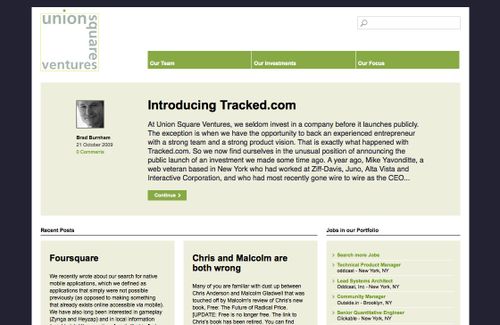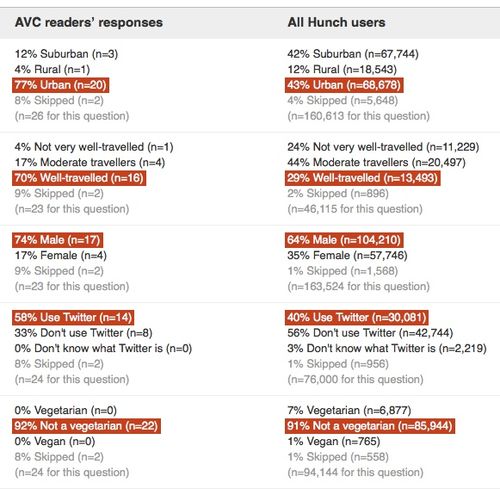One of the more contentious things in the negotiation between an entrepreneur and a VC over a financing, particularly an early stage financing, is the inclusion of an option pool in the pre-money valuation. As my friend Mark Pincus likes to say, "it's just another way to lower the price".
I'll accept that critique. And take it one step further. The option pool is absolutely a piece of the price negotiation. But it is a very important one as I'll explain.
But first, let me lay out a few things for those who aren't well versed in these matters. The pre-money valuation is the value of the company before the money comes in. Let's say we call it $4mm. And let's say the financing is $1mm. Then the post-money valuation is $5mm and the $1mm round is 20% dilutive ($1mm/$5mm).
But to the entrepreneur it might be a lot more dilutive due to the inclusion of the option pool in the pre-money valuation. Let's say that the VC's term sheet says that a 15% "fully diluted post money" option pool needs to be in the pre-money valuation. What that means is that the investor wants 15% of the company, after the financing is closed, to be in an option pool that has not been granted to anyone.
In the case of the $5mm post money valuation, that means there needs to be $750,000 worth of options in the pre-money valuation. If the pre-money valuation is $4mm, then that means the true pre-money valuation to the entreprenuer is $3.25mm. And therein lies Mark's critique that the option pool is just another way to lower the price.
I am sure I lost a few of you on all of that math. If you want to drill down on it, please leave a comment and we'll help you figure this out. It is very important you understand all of this if you are or want to be an entrepreneur who raises venture capital.
The bottom line is the deal I described leaves the entrepreneur and his/her shareholders with 65% of the company after the financing, the VC investor will own 20%, and there will be an option pool representing 15% of the company that has not been issued yet. The $1mm financing was not 20% dilutive, it was 35% dilutive.
So it is not surprising that entrepreneurs hate this provision and fight about it every time. And like most terms, VCs have been abusing it for years by asking for excessive option pools making the provision hated more than it needs to be.
The first point I'll make is that VCs should be upfront about this provision and the fact that it is simply about price. In the example above, I'd be happy to pay $3.25mm pre-money with no option pool. Or I'll pay $4mm pre-money with one. They are the same thing to me. What an entrepreneur needs to do is find out what the market price for their company is with and without an option pool in the number. Once they do that, the negotiation over this point is a lot less contentious.
The second point I'll make is that the option pool request needs to be reasonable and based on some kind of budget. I generally ask the entrepreneur to put enough options into the "pre-money pool" to fund the hiring and retention needs of the company until the next financing. My thinking on this is that I don't want to get diluted between financings. So I like to see a headcount based hiring plan with expected options against each hire combined with a retention plan for all current employees who will need additional option grants.
In most of the early stage financings I've done in the past few years this work on the option pool has shown a need for around 10% in unissued options. I've seen it as big as 15% but that is rare. I've also seen it as low as 5%, but that is even more rare. But the point is this; don't guess or negotiate this number. Do the work, figure it out, and put it in the pre-money and then negotiate price.
I'll wrap with a true story about this provision. When Mark and I were negotiating the first round of financing for Zynga, we got into a real tussle about this provision. He did not want an option pool in the pre-money valuation. I did. Once we agreed that it was just a fight about price, the conversation got easier. I got him to give me an estimate of the pool he would need. We added it to the valuation we had agreed to. He got an increase in price, I got an option pool. And I got one of the best investments I've ever made.

![Reblog this post [with Zemanta]](http://img.zemanta.com/reblog_b.png?x-id=b7c67306-352c-45f9-a3c0-4a05fe5db704)

![Reblog this post [with Zemanta]](http://img.zemanta.com/reblog_b.png?x-id=673f5b42-61f2-4e41-9533-433e69915345)

![Reblog this post [with Zemanta]](http://img.zemanta.com/reblog_b.png?x-id=46c9d2f2-3bc3-45f8-a974-6ad168e69d70)